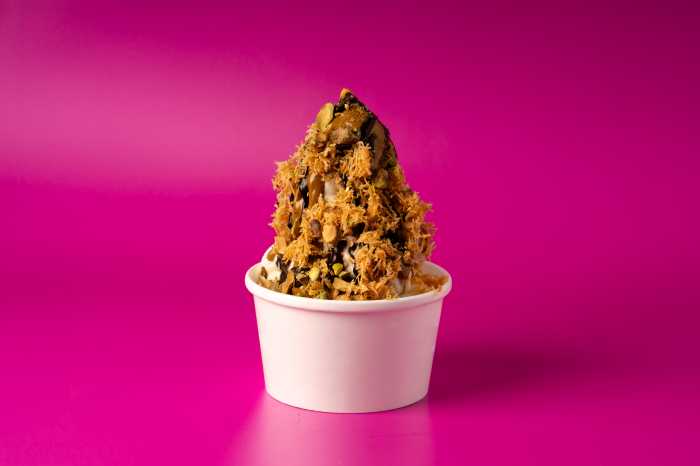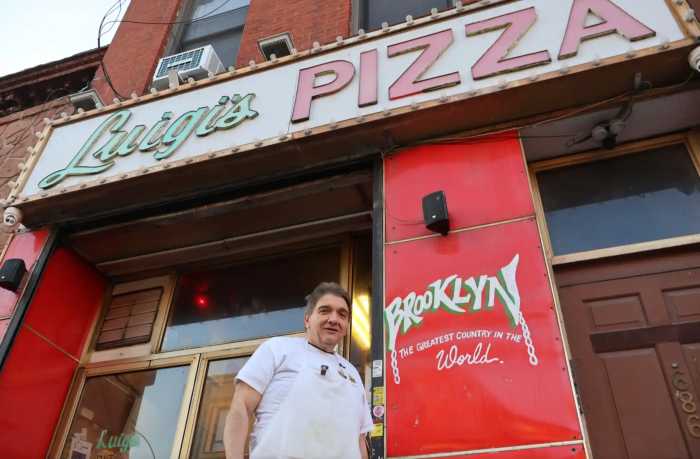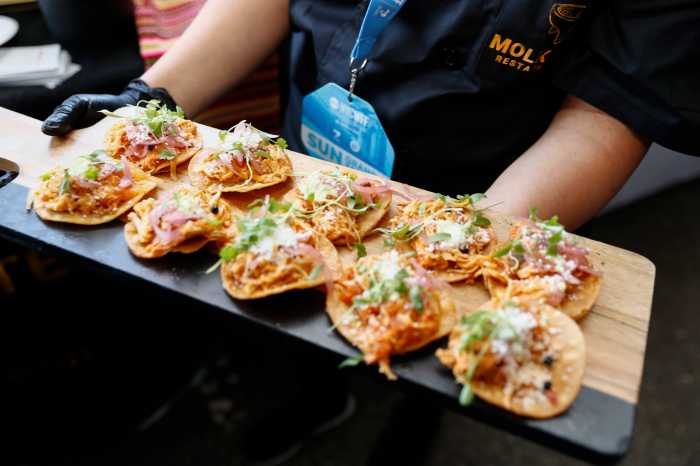
The first thing to know about Murray’s Cheese’s cheese caves is that they aren’t actually caves.
The gourmet shop ages a variety of cheeses in what look more like closets out of its Long Island City production facility.
Cheese makers typically age their cheeses. But Murray’s started aging its own cheeses — a rarity for a retailer — underneath its original Bleecker Street store in 2004. It outgrew that space and in 2013 moved the operation to Long Island City, where all manner of Murray’s Cheese goods are also packaged.
Aging the cheeses is a process that can span over a year amid carefully controlled temperatures and humidities in one of the facility’s four cheese caves: Alpine, Washed Rind, Bloomy Rind and Natural Rind. There’s also a drying room for the bloomy-style cheeses.
Different cheeses have different needs when it comes to bringing out their distinct flavors, and to encourage mold to grow.
“We have four unique environments — we can do any style we want,” says Peter Jenkelunas, Murray’s cave manager. “Having these caves here allows us to do unique things for our shops and provide shops with cheese of better quality. We age it here and send it right over to our stores.”

On a recent visit, the drying room was warmer than any cave, at about 62 degrees, to help dry out the French cheeses and encourage mold to grow quickly. After three or four days in there, the cheeses would move to the Bloomy Rind Cave for up to two weeks, the quickest turnaround among any of the cheeses in the caves.
The Alpine Cave is home to some of the longest-aging cheeses (it’s also one of the smelliest rooms, thanks to the ammonia — a byproduct of the aging — in the air).
Most of the shelves are taken up by the popular Annelies, a Switzerland cheese that’s exclusive to Murray’s that ages nine to 12 months in the cave. Lined up from youngest to oldest, they create an ombre effect, with the rinds getting gradually darker until you reach the oldest, from June of last year.
The cheeses in the Alpine Cave are low in moisture so can withstand longer periods of aging, but they’re still washed typically in salt water once a week so they don’t dry out, as well as rotated and flipped for even ripening.

As the name implies, the cheeses in the Washed Rind Cave are also washed — but their wash is more to impart flavor. Instead of salt water, the liquid might be a beer, cider or wine.
“We get more influence in here because the cheeses are softer,” says Jenkelunas, 34. “The wash rind makes them more funky.”
The Natural Rind Cave is stocked mostly with Murray’s Stockinghall Cheddar, with the cheese coming from Cornell University’s cheesemaker incubator. Some 300 wheels are wrapped in a traditional cheese cloth and coated with lard. Along with the high humidity in the room — about 90 percent — the cloth helps to further hold in moisture. Some of the oldest cheddars in the room have been in there for a year, with thumbtacks on their shelves noting when they’re good to go.

Though Murray’s leaves room for its crowd-pleasers, like the Annelies, experiments and projects are constant in the caves. In the Wash Rind Cave, Jenkelunas is washing a triple cream from Hudson Valley creamery Four Fat Fowl with a beer from Hudson Valley Brewery. In the Alpine Cave, he’s washing a raw cow milk cheese from Spring Brook Farm Cheese in Vermont with Other Half Brewery’s Snowbirds stout (currently known as “Project Snowbird”), which will likely be a holiday special.
“We’re always working on something new,” says Jenkelunas, who’s part of a three-person team plus the odd intern or two. “We’ve been doing a lot of beer wash lately. We’re trying to partner as much as we can and work with local businesses and come up with unique things.”
For those looking to get a firsthand look at the aging operation, Murray’s hosts tours and tastings of the cheese caves about twice a month, capped at 12 people. After suiting up in boots, a jacket and hair net (and beard net, if needed), you’ll get a peek inside each of the rooms, followed by a cheese tasting, where you can compare cheeses aged in different ways and for different amounts of time.
“We hope they learn something that will enhance their appreciation for cheese,” Jenkelunas says. “People think that cheese just goes on a shelf and it sits there for however long. They don’t realize it has to be handled every day or every week. It needs hours to reach its peak.”
IF YOU GO
The next cheese caves tours and tastings are Saturday at 11 a.m. and 12:30 p.m. at Murray’s Cheese’s distribution center | 25-19 Borden Ave., Long Island City | tickets $150 at eventbrite.com



































